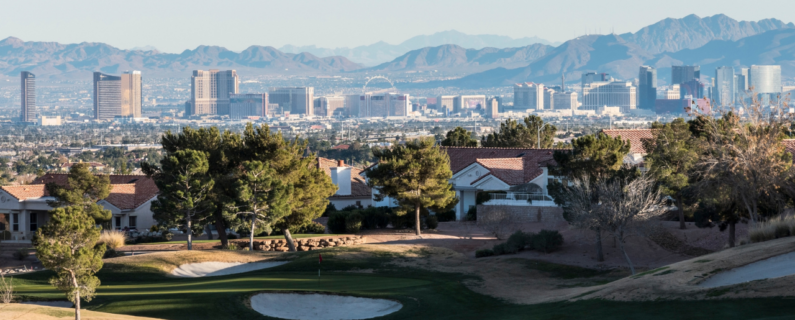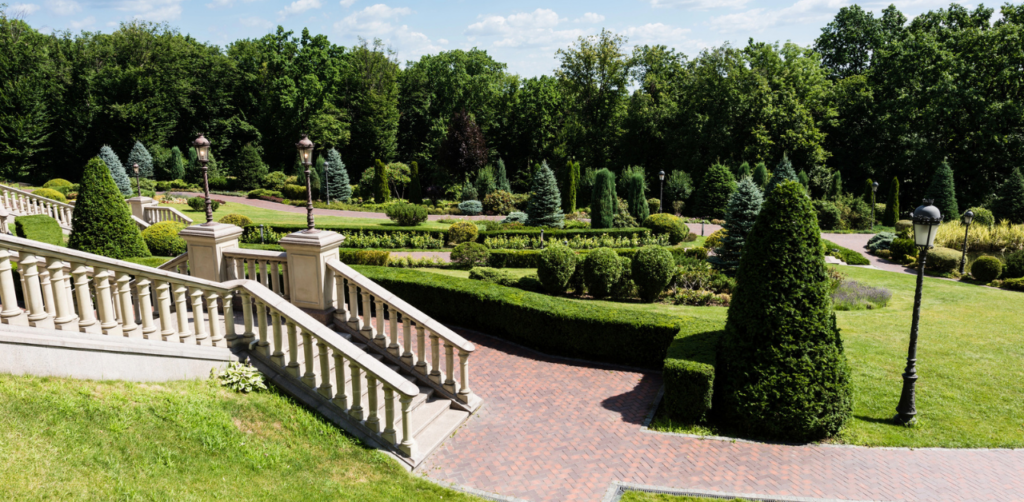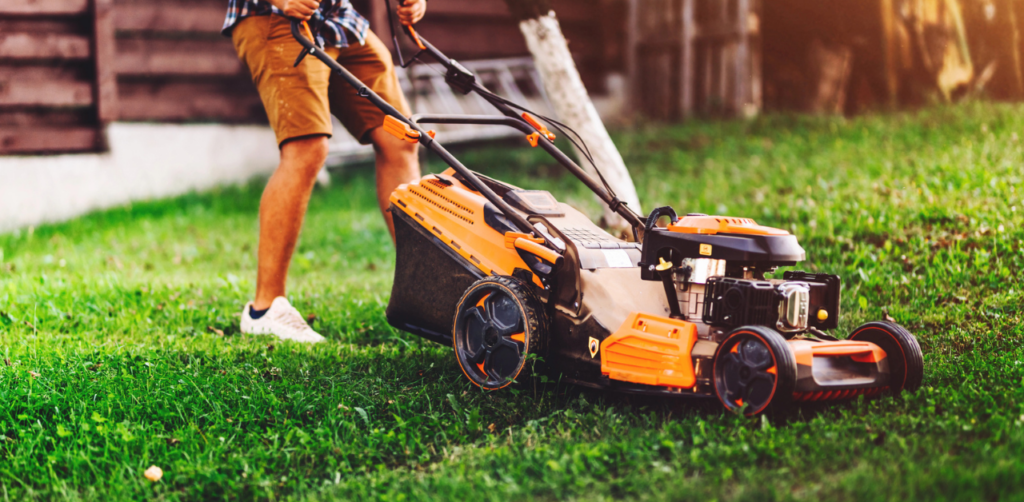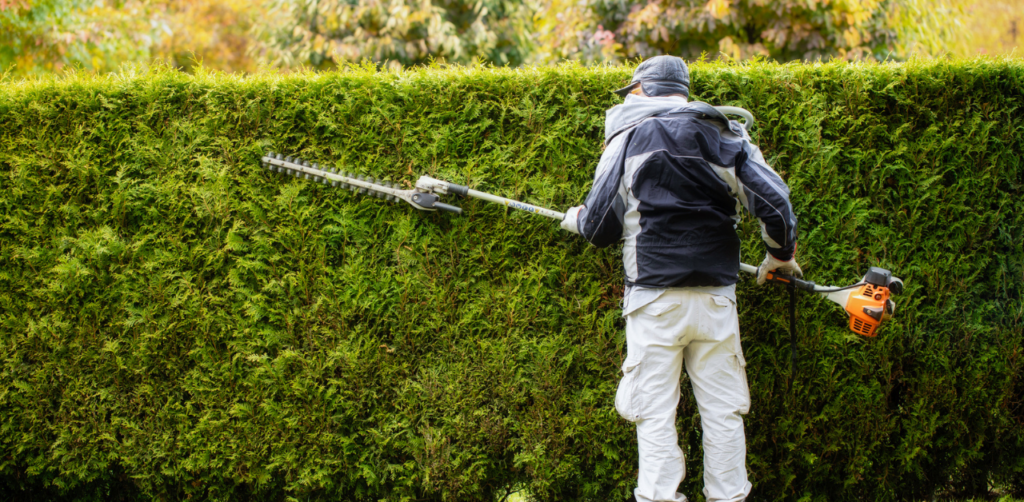
Creating a beautiful community starts with well-maintained landscaping. Unfortunately, without clear guidelines, homeowners might make choices that clash with the community’s vision. This can lead to disputes and decreased property values.
In this article, we address common landscaping issues faced by HOA communities. We’ll explain the problems and provide solutions that balance individual tastes with community standards. You’ll learn about approved plant species, rules for personal gardens, and the HOA approval process. By the end, you’ll understand how to keep your neighborhood attractive and harmonious, benefiting all residents.
Understanding HOA Landscaping Guidelines
HOA landscaping guidelines exist to:
- Protect property values
- Ensure a visually appealing community
- Maintain a consistent look throughout the neighborhood
- Help keep the community attractive to potential homebuyers
- Make the community pleasant for current residents
- Avoid unnecessary expenses
These guidelines cover everything from the types of plants you can use to how often you need to mow your lawn. Landscaping costs can be significant, sometimes reaching up to $60,000 annually, making it essential to have clear rules in place.
These guidelines’ benefits extend beyond aesthetics. They also help prevent invasive species, enhance safety, and ensure accessibility for all residents. Homeowners can find detailed landscaping policies in the governing documents provided by their HOA. Adhering to these rules helps residents foster a harmonious and well-maintained community.
Maintaining Aesthetic Consistency
Uniform landscaping is key to maintaining aesthetic consistency across the community. This not only enhances curb appeal but also helps preserve property values. Limiting lawn decorations and ensuring that all landscaping elements adhere to a specific design palette prevents clutter and maintains a cohesive look. Such uniformity is beneficial for all, enhancing the neighborhood’s attractiveness and enjoyment.
Preventing Invasive Species
To prevent the intrusion of invasive species, HOAs implement approved plant palettes. These palettes ensure that all plants used in the community are visually appealing and non-invasive. Providing a list of approved plant types helps residents make informed choices and contributes to the overall health of the community’s landscaping. This approach not only upholds the aesthetic appeal but also wards off potential ecological problems.
Enhancing Safety and Accessibility
Proper plant placement enhances safety and accessibility within the community. By avoiding hazards near walkways and sidewalks, HOAs ensure all residents feel safe in their neighborhoods.
Maintaining clear, unobstructed pathways and well-kept landscaping helps to prevent accidents and enhances accessibility for all residents.
Common HOA Landscaping Rules

Standard HOA landscaping rules cover a range of topics, from approved plant palettes to restrictions on lawn furniture and sculptures. These rules are designed to:
- Maintain a neat and attractive appearance
- Preserve property values
- Ensure a pleasant environment for all residents
By complying with these rules, homeowners contribute toward enhancing the community’s overall beauty and harmony.
HOAs may also restrict personal gardens to maintain aesthetic consistency and avoid attracting wildlife. Some communities allow limited personal gardening, while others may offer communal garden spaces with sufficient interest. Understanding these rules and their purpose helps foster a cooperative and well-maintained neighborhood.
Approved Plant Palettes
Approved plant palettes are vital in maintaining a harmonious and visually appealing community. These palettes prevent the introduction of invasive species and ensure that all landscaping elements are consistent with the community’s design standards.
Homeowners can enhance the neighborhood’s aesthetic appeal and overall health by sticking to a specific list of approved plants.
Restrictions on Lawn Furniture and Sculptures
HOA rules on lawn furniture and sculptures aim to:
- Preserve the community’s aesthetic
- Protect residents’ safety
- Limit the types and number of decorations to prevent clutter and ensure a neat appearance
- Maintain a uniform look throughout the neighborhood
- Prevent any unpleasant or offensive decor.
Personal Gardens Regulations
Personal garden regulations in HOA communities ensure aesthetic consistency and protect property values. Some HOAs restrict personal gardens to prevent pest and rodent problems, while others may allow small flower beds or community garden spaces.
Understanding and complying with these regulations allows homeowners to contribute to a harmonious and well-maintained community.
Lawn Maintenance Requirements

Lawn maintenance is a critical aspect of HOA landscaping rules, ensuring that all yards are well-kept and visually appealing. Regular lawn maintenance includes:
- Mowing
- Edging
- Weed control
- Proper irrigation
These tasks are essential for maintaining a healthy lawn. HOAs may offer landscape maintenance services to help residents keep their yards in top condition. Homeowners’ adherence to these guidelines contributes to the community’s overall beauty and health.
Effective lawn maintenance also involves seasonal tasks like spring clean-up, aeration, and overseeding. These practices promote deep root growth and a vibrant lawn, enhancing curb appeal and preparing the community for the growing season. Regular maintenance not only keeps the neighborhood looking great but also prevents potential issues like weed infestations and overgrowth.
Regular Mowing and Edging
Regular mowing and edging promote a healthy and dense lawn, which helps resist weeds. HOAs often specify how often grass must be cut, and most contracts include around 40 mowing and edging cycles per year.
To maintain grass health and reduce vulnerability to turf diseases, it’s essential not to cut more than one-third of the grass leaf at a time. Cutting too much at once can stress the grass, making it more susceptible to diseases and pests. Regular mowing at the correct height encourages deeper root growth, which enhances the lawn’s ability to withstand drought and other environmental stresses.
Weed Control Measures
Effective weed control involves using herbicides and manual removal techniques. Systematic and selective herbicides target weeds without harming desired plants, making them highly effective for maintaining a healthy lawn.
Manual removal, or hand weeding can also be effective for areas with light weed infestations or for removing individual large weeds. This technique is particularly effective for areas with light weed infestations or for removing individual large weeds that are resistant to herbicides. Hand weeding allows for precise removal of weeds without the risk of damaging surrounding plants. It is also an environmentally friendly approach, reducing the reliance on chemical treatments and minimizing potential harm to the ecosystem.
Irrigation and Water Conservation
Proper irrigation and water conservation practices are essential for maintaining a healthy lawn and reducing costs. Local regulations, such as those implemented by the Southern Nevada Water Authority (SNWA), play a significant role in shaping Homeowners Association (HOA) landscaping rules. These regulations often include water waste ordinances, which aim to prevent the misuse of water resources, and restrictions on the irrigation of nonfunctional grass—areas that are not used for recreational or functional purposes.
These measures help in achieving a balance between maintaining aesthetically pleasing landscapes and supporting sustainable water management practices, ultimately leading to significant cost savings for homeowners and HOAs.
Tree and Shrub Management

HOAs may require homeowners to obtain permission before planting or removing trees. This approval process ensures that any changes to the landscaping are in the best interests of the community. Residents who comply with these rules contribute to preserving the visual appeal and value of their homes.
Tree Removal Policies
Tree removal policies in HOAs are designed to ensure that valuable trees are not removed without valid reasons. Homeowners may need to get official approval from the HOA before removing any trees to maintain community aesthetics and property values.
These policies, implemented by the property manager, help preserve the visual appeal and overall value of the neighborhood.
Pruning and Maintenance
Proper pruning and maintenance of trees and shrubs promote healthy growth and enhance community safety. HOAs may enforce regular pruning to prevent overgrowth and maintain a neat appearance.
Adhering to these guidelines can help homeowners enhance the overall beauty and functionality of the community.
Hardscaping and Fencing Rules
Hardscaping and fencing rules are essential for maintaining property values and community aesthetics. HOAs often have strict guidelines concerning the installation and materials used for fences and hardscaping projects. Adherence to these rules ensures homeowners’ projects are well-designed and correctly installed.
The approval process for hardscaping projects typically involves:
- Submitting a detailed design plan to the HOA
- Ensuring that all projects adhere to the community’s guidelines
- Making sure the projects are compatible with the overall landscape design
By complying with these rules, residents can contribute towards creating a harmonious and visually appealing neighborhood.
Hardscaping Approval Process
The hardscaping approval process ensures that all projects are well-designed and installed correctly. Homeowners must submit a detailed design plan to the HOA for approval before beginning construction.
The HOA landscaping committee or board reviews the submitted request to ensure compliance with state laws and governing documents.
Fence Design and Placement
Fence design and placement rules help maintain visual harmony and prevent encroachment on neighboring properties. HOAs often regulate fence height, materials, and placement to ensure consistency and uniformity within the community.
Homeowners contribute to a cohesive and aesthetically pleasing neighborhood through their adherence to these rules.
Seasonal Decor and Lighting
Seasonal decor and lighting guidelines help maintain community aesthetics and safety during festive seasons. HOAs often include rules for the timing, placement, and types of decorations allowed. Homeowners, through their adherence to these guidelines, contribute to maintaining a harmonious and visually appealing community throughout the year.
Holiday decoration rules typically allow decorations to go up 30 days before the holiday and require removal shortly after. These rules prevent any safety hazards and ensure that decorations do not become an eyesore. Permanent lighting solutions, such as bistro lighting and landscape lighting, are recommended for year-round use to enhance both safety and aesthetics.
Holiday Decorations
Holiday decoration rules are designed to maintain community aesthetics and safety during festive seasons. Some common regulations include:
- Regulating the placement of holiday lights
- Specifying the types of decorations allowed
- Preventing safety hazards
- Maintaining aesthetic uniformity
These rules are typically enforced by homeowners associations (HOAs) to ensure a pleasant and safe holiday season for everyone in the HOA community. To avoid any issues, it’s important to obtain HOA approval for your decorations from the homeowners association.
Homeowners are encouraged to use Christmas lights with timers to avoid accidentally leaving them on, which can lead to higher utility bills and complaints.
Year-Round Lighting Standards
Year-round lighting standards enhance safety and aesthetics in the community. HOAs recommend permanent lighting solutions, such as bistro lighting, landscape lighting, and tree wrapping, to provide both visual appeal and improved safety. When homeowners adhere to these guidelines, they contribute to a well-lit and attractive neighborhood.
Communicating Guidelines to Residents
Clear communication of landscaping guidelines is essential for ensuring compliance and maintaining harmony within the community. HOAs should provide easily understandable and accessible information on landscaping rules and expectations to all residents. Transparency in rules and regulations helps prevent misunderstandings and fosters a cooperative environment.
HOAs should use various communication methods, such as newsletters, social media channels, and community meetings, to keep residents informed. Explaining rules and their benefits helps residents understand the importance of compliance. Maintaining open communication ensures a well-maintained and visually appealing neighborhood.
Clear Written Policies
Policies should be written in simple, relatable language, avoiding complex terms and unnecessary fluff. Examples of landscaping policies might include:
- Rules about lawn maintenance
- Tree and shrub care
- Hardscaping
- Fencing
- Seasonal decorations
Providing clear and concise guidelines helps HOAs prevent potential issues and foster a harmonious community.
Regular Updates and Reminders
Regular updates and reminders are essential for keeping residents informed about any changes or important aspects of the landscaping guidelines. Utilizing social media channels, newsletters, and email updates can effectively communicate these reminders to residents.
Staying proactive in communication helps HOAs ensure residents remain aware of the latest guidelines and expectations.
Community Meetings
Community meetings play a vital role in discussing landscaping guidelines and ensuring everyone is on the same page. These meetings provide a platform for residents to voice their concerns, ask questions, and participate in the decision-making process.
Encouraging participation in HOA board meetings and landscaping committees helps foster a sense of community and cooperation.
Choosing an HOA Landscaping Company
When selecting an HOA landscaping company, it’s essential to evaluate its experience with landscape design and similar communities. Its understanding of local conditions, referrals, online reviews, and portfolios of similar jobs can provide valuable insights into the company’s reliability and quality of work.
The scope of services in the landscaping contract should be clearly defined, covering both regular maintenance and future enhancements. It’s also important to ensure that the company has the necessary licenses, certifications, and insurance. Choosing a reputable and experienced landscaping company allows HOAs to ensure that the community’s landscaping needs are met with efficiency and effectiveness.
Evaluating Experience and References
Gathering references from other HOAs and checking online reviews can provide insights into the company’s credibility and performance.
Requesting a portfolio of similar jobs helps assess their ability to handle large communities and meet specific landscaping needs.
Contract Essentials
A detailed landscaping contract is essential for ensuring that all aspects of the service are covered, including adherence to hoa landscaping policies. The contract should include clear descriptions of services, payment terms, and liability coverage. By thoroughly reviewing the contract and seeking clarification on any unclear points, HOAs can prevent potential issues and ensure a smooth working relationship with the landscaping company.
Enforcing HOA Landscaping Rules
Enforcing HOA landscaping rules helps maintain the community’s aesthetics and property values. The steps to address non-compliance are as follows:
- Friendly reminder to the residents, encouraging them to adhere to the guidelines.
- Issue written warnings if friendly reminders are ineffective.
- Impose fines for continued non-compliance, if necessary.
Having a clear and fair enforcement process enables HOAs to ensure that all residents contribute to the community’s overall beauty and harmony. This process includes issuing friendly reminders, written warnings, and fines as needed to address any violations. Effective enforcement helps maintain a well-kept and visually appealing neighborhood.
Friendly Reminders
Friendly reminders are an effective way to foster cooperation among residents and ensure compliance with landscaping guidelines. Methods for issuing friendly reminders include placing notes in common areas or mailboxes and sending regular email updates. These gentle reminders often prove more effective than immediate punitive measures in obtaining compliance.
Written Warnings and Fines
If landscaping violations are not corrected in a timely manner, HOAs can escalate to written warnings and fines. Written warnings should include details of the violation, a reasonable deadline to fix the issue, and the consequences of non-compliance.
Persistent non-compliance can lead to the HOA placing a lien on the homeowner’s property, ensuring that all residents adhere to the community’s guidelines.
Ensuring Community Harmony through HOA Landscaping Guidelines
Adhering to HOA landscaping guidelines is essential for maintaining a beautiful and harmonious community. These rules, established by the HOA board, ensure that the aesthetic and safety standards of the neighborhood are upheld. By following these guidelines, residents contribute to the overall appeal and value of the property, fostering a pleasant living environment for everyone.
At Faranesh Real Estate and Property Management, we understand the importance of these landscaping guidelines in creating a thriving community. As a trusted property manager in Las Vegas, we are here to help homeowners navigate these rules and maintain their properties in compliance with HOA standards. Whether you need assistance with landscape maintenance, understanding the approved plant palette, or ensuring your personal gardens align with HOA policies, our team is ready to support you. For personalized guidance and professional management services, contact us at Faranesh Real Estate and Property Management today. Let us help you create and maintain a beautiful landscape that enhances the charm and value of your HOA community.




